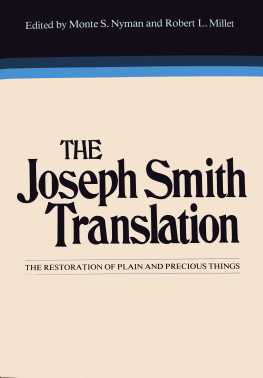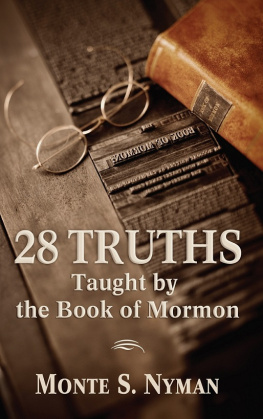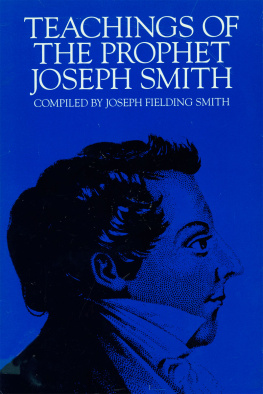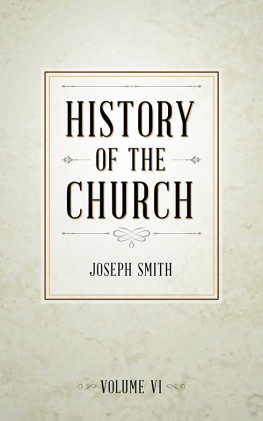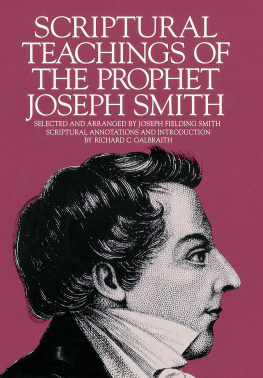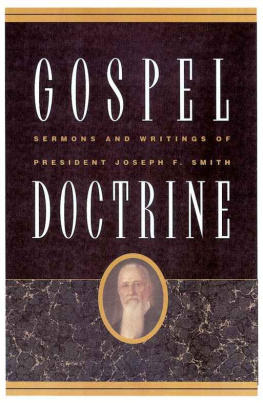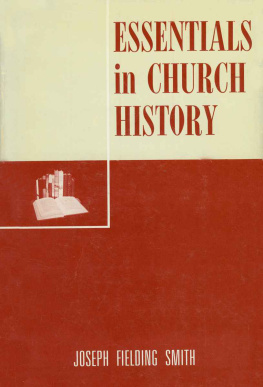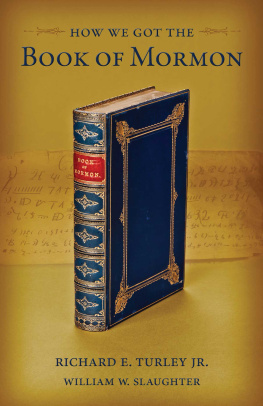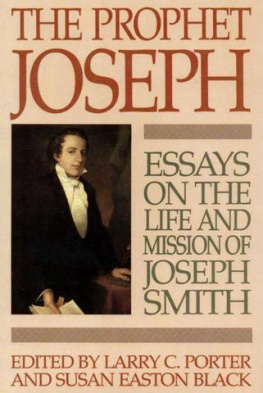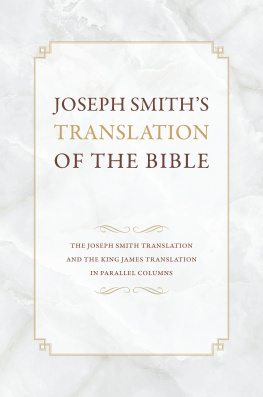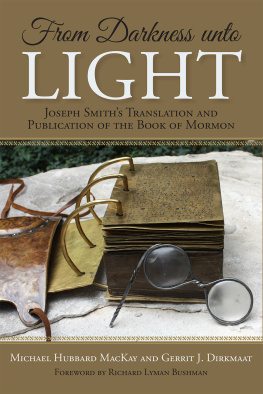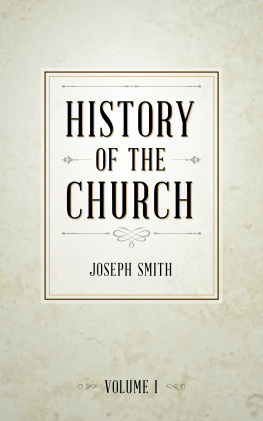The Joseph Smith Translation
The Restoration of Plain and Precious Things
Monte S. Nyman, Robert L. Millet
1985 Religious Studies Center, Brigham Young University.
Any uses of this material beyond those allowed by the exemptions in U.S. copyright law, such as section 107, Fair Use, and section 108, Library Copying, require the written permission of the publisher, Religious Studies Center, 167 HGB, Brigham Young University, Provo, Utah 84602. The views expressed herein are the responsibility of the authors and do not necessarily represent the position of Brigham Young University or the Religious Studies Center.
Dedication
As a witness for the Lord Jesus Christ and Joseph Smith his Prophet, Elder Bruce R. McConkie was powerful and eloquent. He taught from the scriptures and took literally the Lords declaration that this generation shall have my word through Joseph Smith (D&C 5:10). He rejoiced in the light and divine understanding that is made available through the Joseph Smith Translation of the Bible. He used the JST in his writings and did much to bring this revelatory work to the attention of Church members.
One of his last public discourses on the JST is included herein. We therefore affectionately dedicate this volume to his memory.
Preface
Joseph Smith the Prophet recorded the following in his journal for 1 December 1831: I resumed the translation of the Scriptures, and continued to labor in this branch of my calling with Elder Sidney Rigdon as my scribe (History of the Church, 1:238; emphasis added). Joseph Smiths work of restoration of many plain and precious truths of the Bible was one of his greatest contributions towards giving this generation the word of the Lord (see D&C 5:10); it stands as a dynamic witness of his prophetic call. This contribution, however, has gone unnoticed or at least unappreciated by the vast majority of the members of the Church of Jesus Christ.
Because of the growing awareness of the Joseph Smith Translation (JST) in recent years, a symposium was held on the subject on 2-3 November 1984. This was sponsored by the BYU Religious Studies Center under the direction of Monte S. Nyman and Robert L. Millet, but with the guidance of Robert J. Matthews, the General Director of the center. The highlight of the symposium was the presence and major address of Elder Bruce R. McConkie of the Council of the Twelve. Thirteen other papers were presented by nine different contributors from Brigham Young University and from the seminaries and institutes of the Church Educational System. The symposium was concluded with a question-answer panel discussion involving these nine men. The views expressed in the various papers do not necessarily represent the position of The Church of Jesus Christ of Latter-day Saints or of Brigham Young University: each author takes sole responsibility for the ideas and conclusions presented in his paper.
Because of his lifetime of labor in bringing to light much of the historical and doctrinal significance of the JST, we express a special appreciation to Robert J. Matthews, professor and dean of Religious Education at Brigham Young University.
It is sincerely hoped that this volume will do much to build faith and enlighten the members of the Church with regard to this critical branch of the Prophets calling.
Monte S. Nyman
Robert L. Millet
The Doctrinal Restoration
Elder Bruce R. McConkie
May I say in all sincerity that I am both pleased and honored to meet and counsel with the cream of the teaching crop of the Church.
Here at Brigham Young University we have assembled gospel teachers of scholastic renown and spiritual insight. It is their privilege to be the model teachers of the Church; to be a leavening influence upon all others who teach the words of eternal life, to be lights and guides and patterns for all of the teachers in the earthly kingdom.
May I remind you of the high status of those who teach the gospel by the power of the Spirit. As Paul expressed it, God hath set some in the church, first apostles, secondarily prophets, thirdly teachers, after that miracles, then gifts of healings, helps, governments, diversities of tongues (1 Corinthians 12:28).
Note the order of priority. In the true Church apostles are first; they hold the keys of the kingdom, receive revelation for the Church, and regulate all of its affairs in all the world as they are guided by the power of the Holy Ghost. President Spencer W. Kimball presides over the Church today because he is the senior apostle of God on earth.
Next to the apostles stand the prophets, every prophet ministering in his own place and sphere. The gift of prophecy is the gift of testimony, for, as the angel said to John, the testimony of Jesus is the spirit of prophecy (Revelation 19:10).
And it is this gift of prophecy, this gift of testimony, this gift of knowing by the Holy Ghost... that Jesus Christ is the Son of God, and that he was crucified for the sins of the world (D&C 46:13)it is this gift of personal revelation that is the rock foundation upon which the Church is built.
Upon this rockthe rock of personal revelationthe Lord builds his Church. Without it there would be no Church, no kingdom of God on earth, no gospel light in the souls of men. Manifestly, in the true Church, it is next in importance to the very apostolic keys and powers.
After apostles and prophets come teachers. Every teacher is expected to be a prophet and to know for himself of the truth and divinity of the work. Indeed, in the true sense, a teacher is greater than a prophet, for a teacher not only has the testimony of Jesus himself, but he bears that testimony by teaching the gospel.
What is the teachers divine commission? It is to preach the word of truth by the Comforter, in the Spirit of truth. And if he teaches in some other waymeaning by the power of the intellect rather than the power of the Spiriteven though his words are true they are not of God. (D&C 50:17-18.) Such is the language of the revelation.
Hence in the law of the Churchspeaking as though from the burning fires of Siaithe Lord commands: The... teachers of this church shall [it is mandatory!] teach the principles of my gospel, which are in the Bible and the Book of Mormon, in the which is the fulness of the gospel.... And... these shall be their teachings, as they shall be directed by the Spirit.
Then, with the fires of testimony burning in the hearts of the teachers, and the thunders of Sinai prepared to carry their message to the ends of the earth, the Lord issues this decreecall it the law of the teacher, if you willAnd the Spirit shall be given unto you by the prayer of faith; and if ye receive not the Spirit ye shall not teach.
Thus saith the Lord: Receive my Spirit and be enlightened thereby; and unless this is the caseThou shalt not teach my gospel.
And all this ye shall observe to do as I have commanded concerning your teaching, until the fulness of my scriptures is given. At that time they had only the imperfect King James Version of the Bible and the near-perfect Book of Mormon. These were their only scriptural sources for the principles of the gospel.
When the Joseph Smith Translation of the Bibleincluded in this revelation under the designation fulness of my scripturescame forth, then teachers were to use it and the various additional direct revelations. This, then, is a command to teach the changes and additions now found in the so-called Inspired Version.

